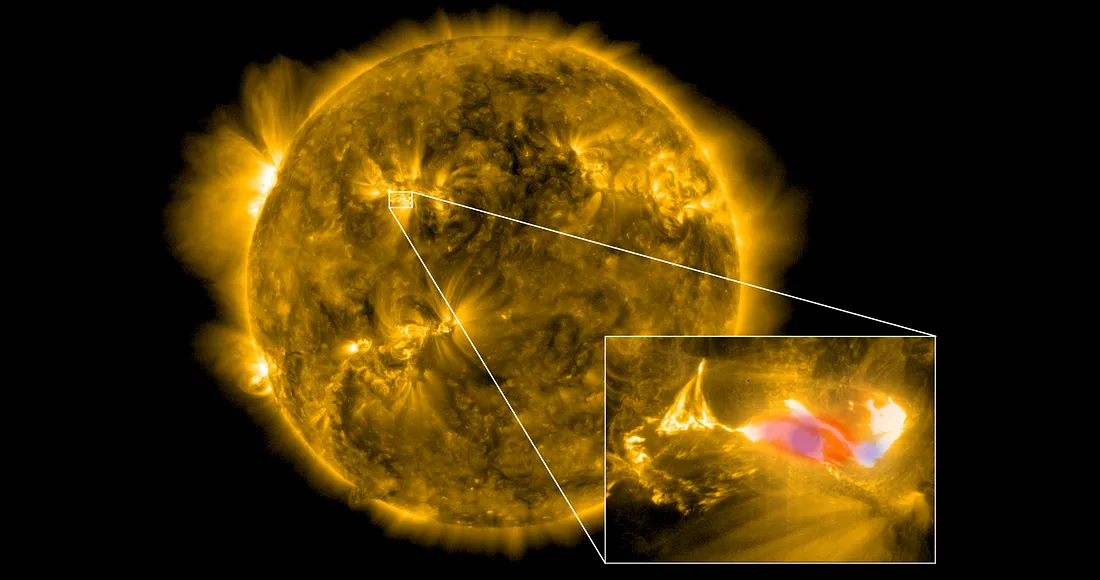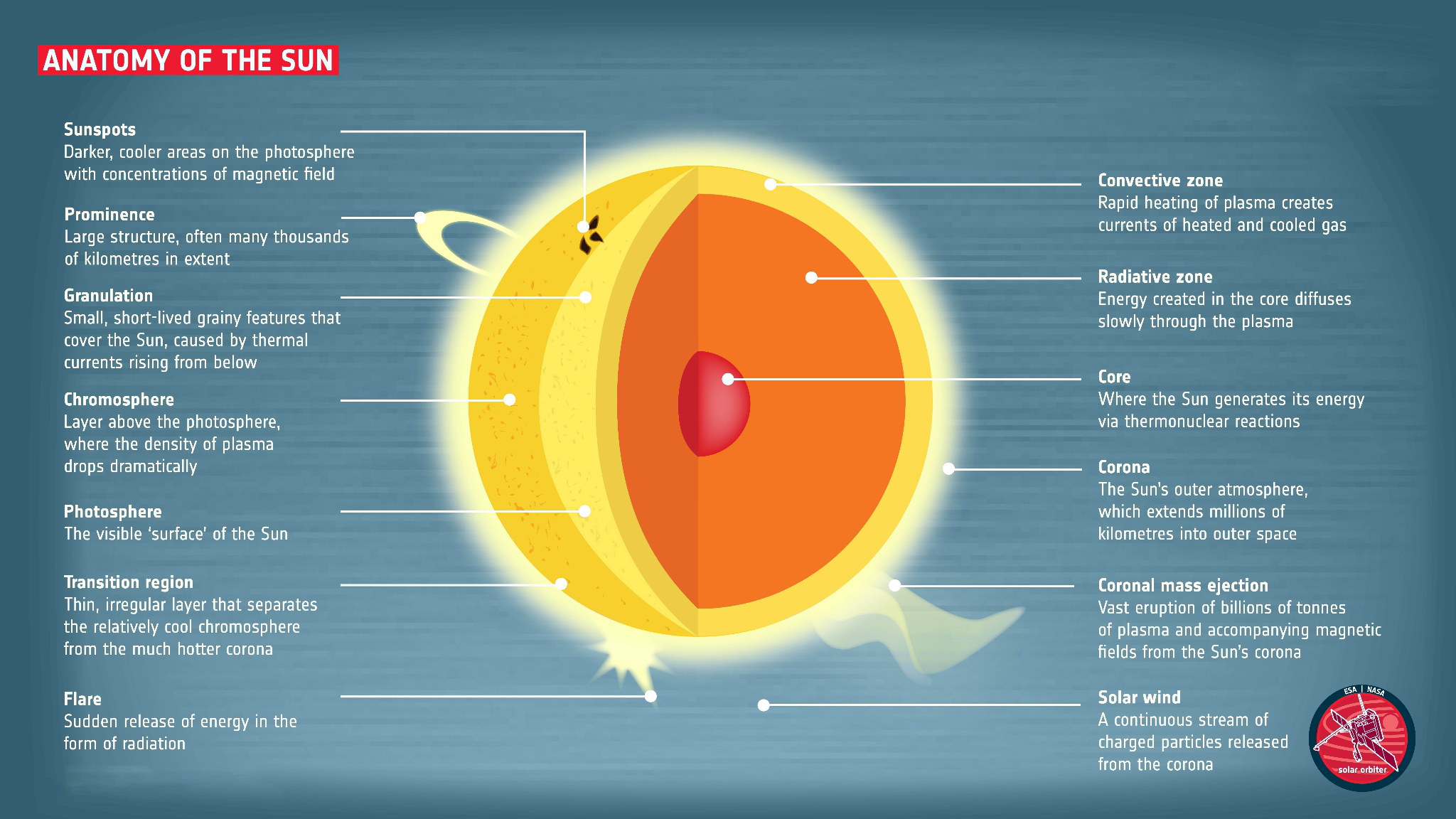Bird-Wing Solar Event | 26 May 2025
NASA has observed a massive solar eruption, named as the “Bird-Wing” event due to its bird wing-like plasma structure. Though it raised concerns of a severe geomagnetic storm, Earth escaped a direct hit, experiencing only minimal impact.
Bird-Wing Solar Event
- Origin: The eruption originated from the Sun’s northern hemisphere, with its plasma (eruption) structure extending over one million kilometres, i.e. more than twice the Earth-Moon distance.
- Components Involved:
- The event involved both a Solar Flare and a Coronal Mass Ejection (CME).
- Solar Flares are sudden, intense bursts of electromagnetic radiation from the Sun’s surface caused by the snapping and realignment of magnetic field lines.
- They are classified from A to X based on X-ray brightness.
- They often occur alongside CMEs and travel at the speed of light and can reach Earth in about 8 minutes.
- Coronal Mass Ejection (CME) is an explosive ejection of charged solar plasma into space, travelling at speeds of 250 to 3000 km/s (slower than solar flares) and taking 1–3 days to reach Earth.
- Solar Flares are sudden, intense bursts of electromagnetic radiation from the Sun’s surface caused by the snapping and realignment of magnetic field lines.
- The event involved both a Solar Flare and a Coronal Mass Ejection (CME).
- Impact on Earth:
- Solar flares can cause geomagnetic storms that disrupt Earth’s magnetic field, leading to radio blackouts, power grid failures, and visible auroras at lower latitudes.
- High-energy particles may damage satellites, GPS, and communication systems.
| Read More: Coronal Mass Ejections, Solar Flare |


